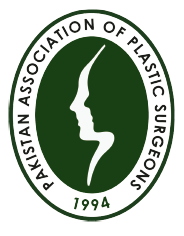
Due to any trauma, road traffic accident, nerves can be damaged and patient can have the following symptoms.
Numbness in foot and toes
Tingling sensation
Altered sensation as compared to other limb
Pain in leg
Burning sensation
Decrease in muscle power of foot and legs
In order to treat such injuries there are multiple options and procedures available Depending upon duration of injury, injury type, and site of injury.
1. Primary Nerve Repair:
If there is sharp cut wound with the above symptoms then high chances of transection of nerve need to explore the injury site and repair primarily (end to end sewn) the damaged part.
2. Nerve Graft:
Graft is basically a segment of tissue taken from other site of body of same patient if the duration of injury exceeds more than 3 months and there is no sign of recovery then we can explore the injury site and repair the damaged nerve segment with a nerve graft to bridge the gap.
3. Nerve transfer
If the injury site is scarred, and/or high above on the limb and duration is 3-9 months, then nerven transfer can be an option. It means restoring the nerve supply near to the target tissue or organ. Now let us see some clinical scenarios
A patient is unable to elevate foot at ankle joint (Dorsiflexion) secondary to injury of Common Peroneal. Nerve at the level of knee or high above knee.
Nerve repair via one of the above options if duration of injury is up to 9-12 months.
Tendon transfer with donating a tendon which lowers down the foot (plantar flexion) to the non-motorized dorsiflexor tendon mostly after 12 months of injury. For both the above procedures patient needs to get admitted for some days depending upon severity of injury.
Procedures are done under general anesthesia.
After the procedure done the operated limb is placed in a customized plaster splint which is there for at least 4-6 weeks.
There will be a supervised physiotherapy during and after the hospital stay till at least 8-12 weeks and the limb gains its power.
There can be some side effects of the procedures but very low chances in expert hands like
Pooling of blood (hematoma)
Infection
Wound issues (dehiscence)
Loosening of repair
Failure of the procedure.
Loss of sensation due to injury to Sciatic Nerve High above the level of knee
Treatment option is the same as of nerve repair depending upon the duration of injury as mentioned above.
After nerve repair nerve grows at 1inch per month speed from the site of repair so it will take time to
get results of nerve repair usually in 6 months till 2 years, depending upon the level of injury and site of
repair. For nerve transfer duration of recovery is shortened as it is close to the target tissue.
For tendon transfer recovery is there just after repair but depends upon the adherence of patient to
physiotherapy protocol.
Outcome depends on the location and size of the fistula and status of surrounding tissues. Although most of the fistula closes after the surgery, some may recur and requires further surgery.
It usually takes less time than the original hypospadias repair and completes in less than an hour.
The surgery is performed under general anaesthesia and as a day care procedure. Patient can go home the same day after recovery from anaesthesia.
The most common complication is recurrence of the defect. Others complications include infection, difficulty in urination and stricture formation


